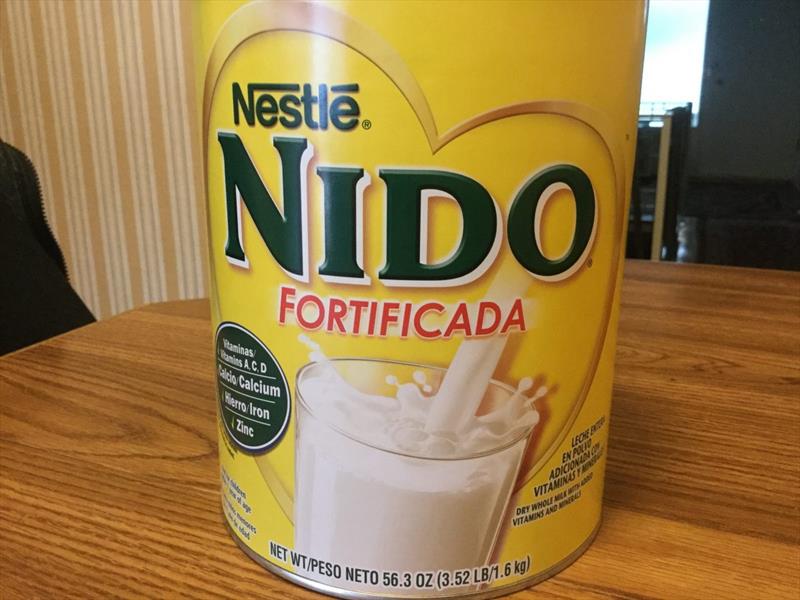
Provisioning Tip: Do you know Nido?
by Rob Murray 15 Sep 2019 14:53 UTC

Nido © Rob Murray
When travelling for extended periods or in remote areas, fresh dairy products become unobtainable. In Mexico and Latin America, UHT processed milk (long-life box-milk) is widely available, but the downside is that it takes a lot of space to store and is heavy to carry from the store to the boat. On the taste continuum, UHT is a step down from fresh, but is head and shoulders above the taste of any powdered milk readily available in Canada or the USA.
Powdered or dried milk is an alternative, but if you're familiar with the brands typically available in Canada and the USA, you probably have a strong aversion to using them due to their tenuous taste relationship to fresh milk. Simply put, they taste awful compared to fresh or UHT alternatives.
Enter Nido! Nido is widely available in Mexico and Latin America, and can be found in some stores in the USA (although it's usually not with the other powdered milk; it's found in the Hispanic section of the store). We find it in the Hispanic section of Walmart. There are several types, some specially formulated for infants. You want the stuff in the yellow can, with the label 'Fortificada'.
Reconstituted Nido is almost as good as UHT milk; a spoonful in coffee is a reasonable creamer, and we find it is indistinguishable from fresh or UHT in baking, or when used to make yogurt. Unlike powdered milk more widely available in Canada and the USA, it is a full-fat product (3.25% milk fat), not skim (0% milk fat), which makes quite a difference in baking or in making yogurt.
If you want skim milk powder, look for Carnation brand, as it regularly scores best in taste tests.
There are several processes for making powdered milk and the common one used in Canada and the USA requires reconstituted milk to 'sit' for a few hours (preferably overnight) before drinking so it can fully dissolve. The process used for Nido is different, and the reconstituted product can be consumed immediately.
We use Nido in baking (add water and milk powder to mix in quantities required to make the required amount of milk, mix and bake - no need to mix separately first). We also use it to make yogurt, using a 'rich' mix with 25-50% extra milk powder per the instructions on the can.
Canadian federal courts have now found serving powdered milk is not cruel and unusual punishment. However, generally available brands are so bad tasting some might think they are. If you use Nido, your crew might not take you to court!
How to Make Yogurt Aboard
To make yogurt, use fresh, UHT or reconstituted milk (using powdered milk you can make a richer and more robust yogurt if you make it a bit 'thicker', adding 25-50% more milk powder per a given amount of water. You can also make a thicker yogurt by adding some powdered milk to fresh or UHT milk to increase the milk solids). Heat the milk to 43-47 degreesc (110-115 degreesf). Too cool, it won't start. Too hot, you can kill the yogurt culture. Stir in a tablespoon or two of 'starter' yogurt per litre of milk, either from a store bought yogurt or use some from your last batch, or use a dried yogurt starter. We use a wide mouth thermos, but any container that will keep warm will work (jar wrapped in towels, etc.). Let the yogurt sit for 5-10 hours (keeping it warm). Decant and store in the refrigerator. Don't eat it all, remember to keep some to start your next batch!
This article has been provided by the courtesy of Bluewater Cruising Association.